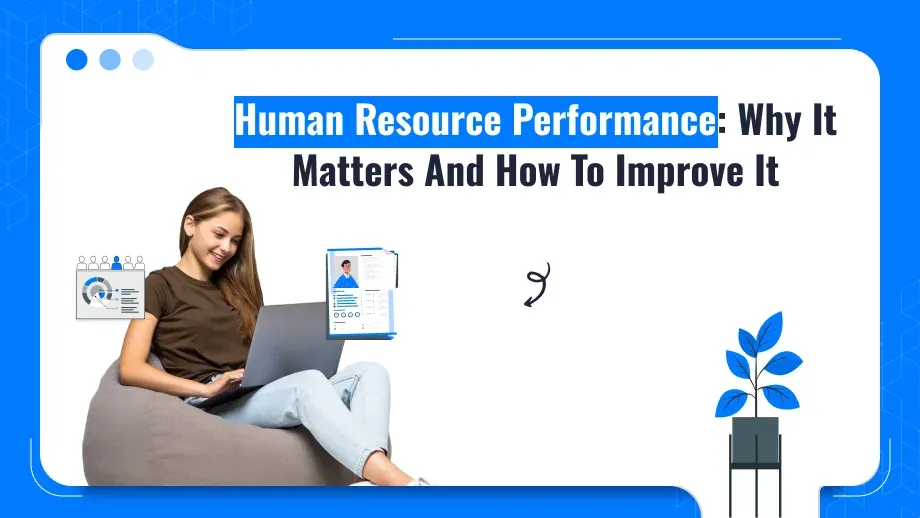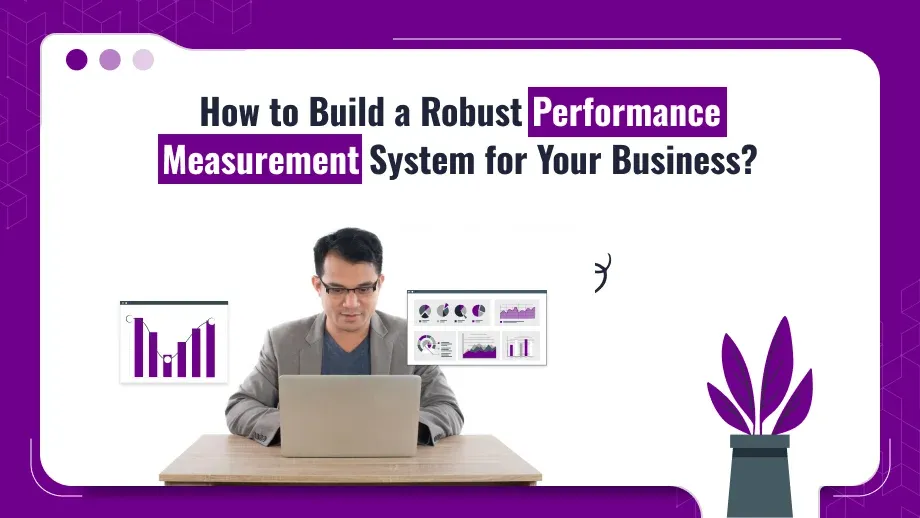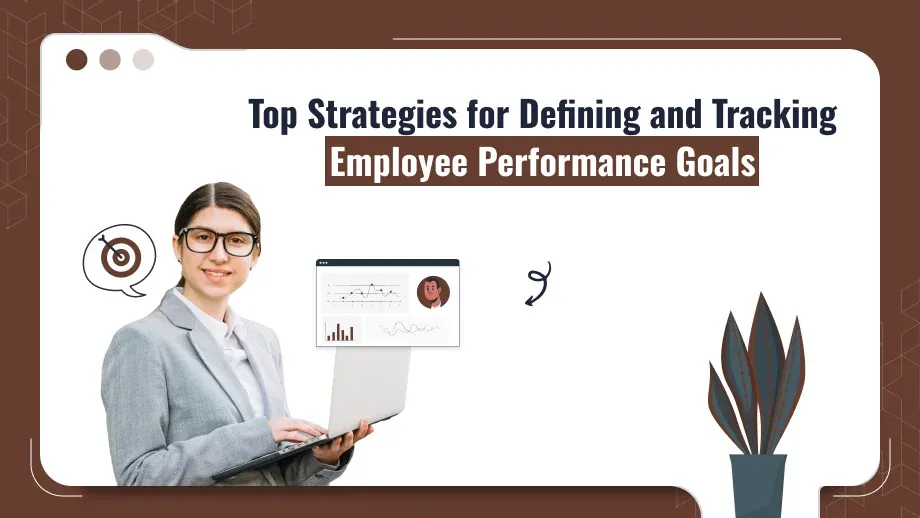
In today’s competitive business world, human resource performance has become the determinant of success in any organization. When a well-structured HR and performance management system is in place, an HR department fulfills the administrative and compliance roles that it is entrusted with but also contributes toward the strategic outcome of the company. Good HR departments have the potential to drive productivity, enhance the satisfaction of the employees, and inspire a culture of growth and accountability.
Understanding how to enhance human resource and performance management is, however, not an easy undertaking. This calls for making the appropriate tool usage and the right objective-setting together with implementing continuous feedback and improvement processes. The following article highlights why human resource performance matters, what it takes for the success of a performance management HR system, and how one may enhance his HR processes with good applications and tracking of employee performance.
Significance of Human Resource Performance
Human resource performance pertains to the effective manner in which an HR department executes its tasks, from recruitment and onboarding to employee engagement and compliance. In turn, a good HR performance model is linked to various organizational goals. This way, the workplace becomes lively, with motivated and productive employees. Here are some reasons why human resource performance is important:
Aligning Employees with Organizational Goals
A primary duty of the human resources department is to ensure that the aims and actions of employees align with the broader purpose and strategic objectives of the organization. An HR system that functions properly will guarantee that each employee is aware of their position within the overall organizational structure. Thus, alignment fosters unity and motivates staff to strive toward a shared goal.
Employee Engagement and Satisfaction Improvement
It has also been found that the degree of employee engagement is very close to the feeling of support and value from an organization. employees performance assessment would automatically lead to high engagement since it is the efforts of the HR professionals in creating a pleasant work environment, effective performance management systems, and development opportunities. Engaged employees will work hard and stay loyal to the organization and contribute to a healthy company culture.
Compliance and Risk Management
An example of effective HR and performance management is compliance with labor laws, workplace safety, among many other regulatory requirements. Efficient performing HR departments take measures before time on compliance, which ensures a company is protected against legal and monetary risks. This further forms a sound base for employee trust as they know the care of the organization to the working staff.
Organisational Growth and Innovation
A high performing HR team is important for the development of an organization as they bring in and retain the best talents, identify the need to develop specific skills, and design a development program. This supports employee growth and, thereby, enables the company to stay ahead in competition, adapt to market changes, and lead to business success in the long run.
Critical Metrics for Measuring Human Resource Performance
Evaluation by the company for human resource performance is done based on specific metrics measuring HR efficiency and impacts. These metrics indicate what is working and what is not and can point out needed improvement areas, therefore ensuring that the human resources and performance management initiatives will point toward business objectives. Included among the metrics are:
Employee Turnover Rate: This calculates the employee turnover rate for a specific time period inside the organization. An organization may be experiencing problems if turnover is high, such as low employee engagement or little to no opportunity for advancement. Thus, monitoring turnover allows HR to identify problem areas to increase retention.
Time to Hire: The time taken to hire open positions reflects the effectiveness of the recruitment process. Shorter times to hire usually indicate a well-organized and effective HR team. Long hiring times usually indicate bottlenecks in the recruitment process, which may impact productivity and increase hiring costs.
Employee Satisfaction and Engagement Levels: Measures of satisfaction and engagement that can be done through various surveys help establish whether there is a gap between employee needs and the strategies deployed by HR. A greater engagement level usually goes along with higher productivity and a reduced turnover, which act as an indicator of excellent performance in HR.
Rate of Absence: This indicates the percentage of employees that miss work without permission. High absence rates might be a sign of issues with work-life balance, job satisfaction, or staff morale. HR can proactively look into these issues through monitoring absenteeism.
Training and Development ROI: This employee training return on investment helps HR measure if the development programs build skills that help achieve organizational goals. A positive ROI is a good sign that training is aligned well with company objectives.
These metrics help in tracking employee performance effectively and are valuable in making data-driven decisions and improvements in the HR department.
Drive productivity with improved Human Resource Performance.
Start building a high-performing team today!
Common Challenges in Human Resource and Performance Management
It would be prudent to say that while improvement of human resources and performance management is of paramount importance, there are some challenges an HR team encounters that will definitely make it a difficult challenge. Some of the most common challenges encountered in affecting the performance of HR teams include the following:
Limited Resources and Budget Constraints
Given that most HR departments lack big budgets, they can barely invest in performance management applications, recruitment tools, and training programs. The constraints related to the budget might also restrain the potential HR capacity for influencing actionability like total development programs or employee engagement surveys.
Meets Changing Workforce Expectations
Modern workforces have different expectations around work-life balance, inclusion, and mental health support. With such demands, an effective HR system should adapt itself to the demands. Thus, without proper resources and flexibility, this could prove to be quite difficult.
If the demands are not met, the outcome will lead to low engagement and, consequently, a high level of turnover.
Labor laws and regulatory standards are always changing, making compliance not an easy one for the HR department. Continuous updating of company policies and training programs along with doing regular compliance checks are required so that these laws are properly complied with. Non-compliance can lead to fines, besides damaging the reputation of the company.
Data Management and Analysis
Employee data management and action-oriented insight derivation are two critical areas for the successful tracking of employee performance and subsequent informed decision-making. Unless effective tools for data management are used, it will become difficult for the HR department to collect and analyze performance data correctly. The data management process can be made seamless by the use of performance management applications; however, a lot of time and money is also invested in it.
This can facilitate the HR department to identify these challenges and overcome potential issues to enhance the overall human resource performance.
Performance Management Applications
It is through performance management applications that human resource departments get much benefit. With the increasing advancement of technology, its performance management application also changes to track and measure performance in human resources to enhance it suitably. Some of the means through which the HR utilizes performance management applications are:
The system may also comprise ATS: ATS tools help mitigate the recruitment processes by facilitating the management of applications and access of candidate data by HR managers. This ensures that the HR can fasten time-to-hire, where the positions are filled soon by qualified candidates.
The employee self-service platforms allow them to request leaves, view the human resource performance metrics, and access the personal information. This will empower them to take care of this information and lighten the work related to administrative tasks that are associated with the HR.
Tools for Feedback and Surveys: Continuous feedback tools let the HR gather insights concerning employees’ satisfaction and level of engagement in real time. Frequent surveys guide HR on the perspectives and issues that employees have that need to be addressed because of the data that feeds into proactive improvements in both human resource and performance management.
If HR uses performance management applications correctly, they have it right that they actually follow up on the various happenings in the different people at work, which calls for better-informed choices as well as a productivity-increasing workforce.
Strategies for Effective Employee Performance Evaluation
An integral part of performance management HR strategies is the evaluation of employee performances. Such assessments by the HR, based on employee contributions, help determine the areas to be improved and provide appropriate support for continued growth. Some of the key strategies to be used for effective assessments include:
1. Set SMART Goals
Encourage employees to set SMART goals, which are Specific, Measurable, Achievable, Relevant, and Time-bound. This ensures that objectives are realistic and aligned with company priorities. Clear goals create a sense of purpose and accountability and help employees understand what is expected of them.
2. Regular Performance Check-ins
This enables the HR to monitor the progression during the year, not during the annual review. This discussion will give avenues to bring up issues early enough and to change the goals to ensure that the employees remain on track.
3. Balanced and Constructive Feedback
Feedback should comment on specific areas of improvements while giving recognition to strengths. Constructive feedback promotes growth and allows employees to understand how they can enhance their performance, making assessment an opportunity to develop rather than criticize.
4. Leverage on Data from Performance Management Applications
This makes HR track productivity, engagement, and attendance more accurately since there is data from performance management applications. Data-driven assessment helps HR make objective decisions about the performance of an employee.
These strategies will ensure that employee performance appraisals are fair, constructive, and aligned to organizational objectives and create a positive and productive work environment.
Best Practices for Tracking Employee Performance
Proper and consistent tracking is the only way by which the performance of employees can be measured accurately. It forms one of the crucial parameters that help in measuring the effectiveness of HR initiatives. Some best practices in human resource and performance management are as follows:
Define Key Performance Indicators: KPIs provide a benchmark for the measurement of individual performance. After defining KPIs, it is not a big task for HR to track their progress and measure the contribution against the set standards of the company.
Involve the process of self-assessment on the part of the employee as this may provide a reflection of what an employee thinks about himself or herself and areas where scope for improvement exists, and thus the employee takes better responsibility for his or her performance.
Apply a balanced scorecard approach: This allows the incorporation of quantifiable performance data like sales volume and other qualitative measures such as interpersonal skills, that balance out each employee’s assessment through scores.
Encourage Peer Reviews: This will give the HR a sense of how employees in teams can collaborate for the benefit of the team work and, hence get comprehensive insight into the individual strengths and weaknesses.
Using these best practices can help the HR create the complete performance management system for the organization and make sure that its performance evaluations are objective, equitable, and relevant to the business objectives.
Human Resource and Performance Management of Tomorrow
Human resource and performance management will only evolve with changing technology and dynamics in the workforce. It’s all set to change for good in the following way:
AI Usage: AI applications predict through breaking down large data sets into trends, possible problems, and proactive decisions on talent management.
Employee Experience: Organizations are increasingly paying attention to experience with regard to employees; they have started to be sensitive towards mental health issues and flexibility in work life along with professional growth opportunities. All these employee-centric policies will support engagement as well as retention.
Hybrid and Remote Work Models : Hybrid and remote working styles are becoming the norm increasingly, and HR needs to track performance of employees in those scenarios as well. Tools or programs for tracking performance at workplaces must be designed compatible enough to manage a distributed force on an organizational level.
Human resource and performance management teams may build a robust and adaptable workplace that meets the changing demands of the contemporary workforce by adopting these trends.
Conclusion
In essence, enhancing human resource performance is not just a management task; it’s a strategic commitment to fostering growth, innovation, and resilience within an organization. When companies prioritize their people through clear objectives, continuous development, and a culture of open feedback, they create an environment where individuals can thrive and contribute meaningfully to shared goals. Strengthening HR performance leads to a ripple effect—engaged employees, improved productivity, and a positive organizational climate that attracts and retains top talent. By making human resource performance a central focus, organizations set themselves up not just for immediate gains but for sustained, long-term success that adapts to future challenges with a skilled and motivated team.






